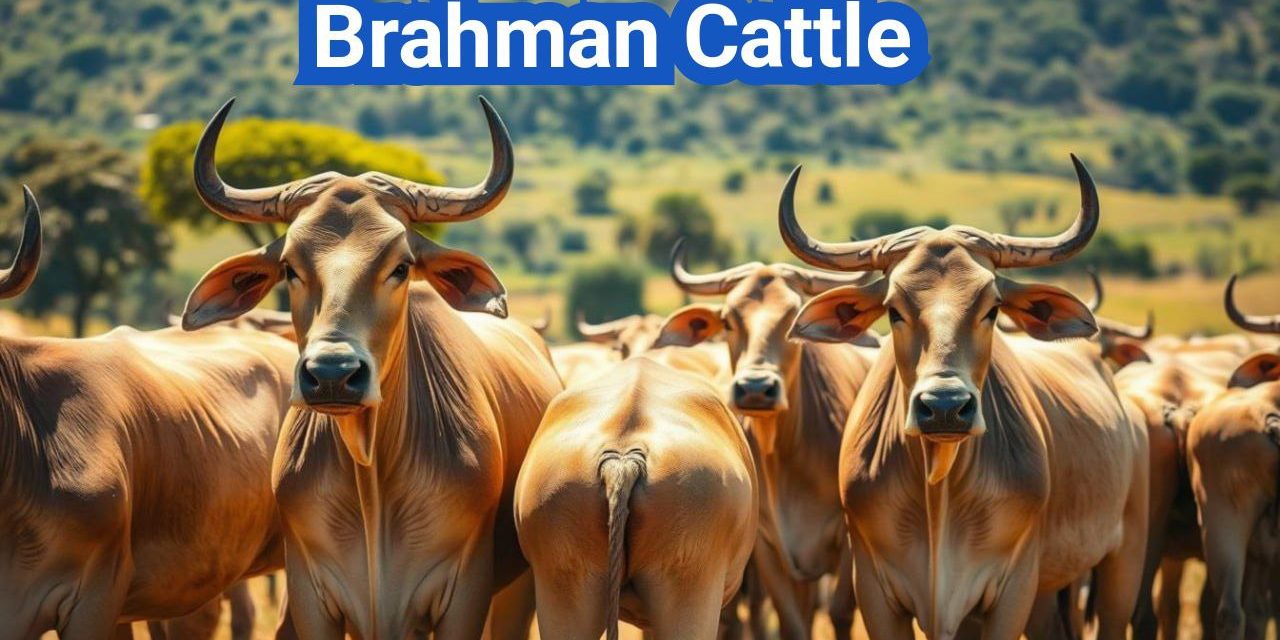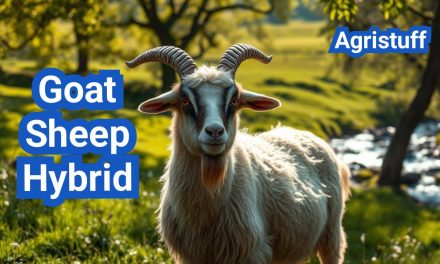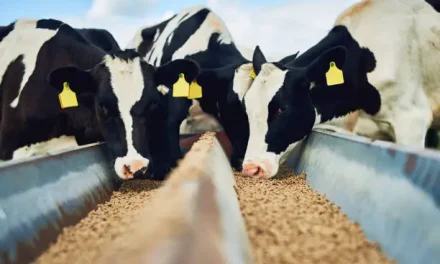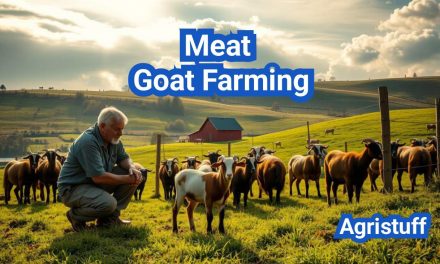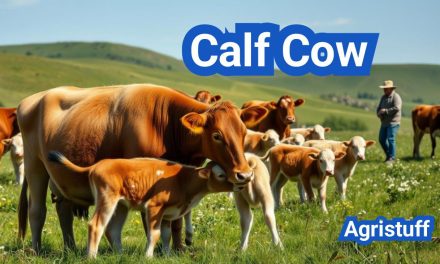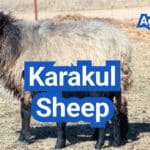The Brahman breed has been a cornerstone in livestock farming, particularly in tropical regions, due to its exceptional heat tolerance and beneficial traits.
Originating from Bos indicus cattle from India, this breed has been instrumental in the development of various other breeds.
The significance of Brahman Cattle lies in their ability to thrive in harsh climates, making them ideal for cattle farming in hot regions.
Key Takeaways
- Understanding the origin and significance of Brahman Cattle in livestock farming.
- Exploring the breed’s heat resistance and its advantages.
- Examining the key traits that make Brahman Cattle valuable.
- Discussing the various uses of Brahman Cattle in cattle farming.
- Highlighting the importance of Brahman Cattle in tropical regions.
The Origin and History of Brahman Cattle
The history of Brahman cattle is fascinating, beginning with their ancestry in the Bos indicus cattle of India and evolving into the robust breed known today. Brahman cattle have become renowned for their heat tolerance and resilience, characteristics that have made them invaluable in various parts of the world, particularly in tropical and subtropical regions.
Zebu Cattle Ancestry
Brahman cattle are descended from the Bos indicus, commonly known as Zebu cattle, which originated in India. The Zebu’s distinctive characteristics, such as their hump and large ears, have been passed down to the Brahman breed, contributing to their heat tolerance. The primary strains that contributed to the development of the Brahman breed include the Guzerat, Nelore, and Gir.
Development of the American Brahman
The American Brahman was developed in the United States by breeding the imported Indian Zebu cattle. This process began in the early 19th century and continued through the 20th century. The breed was developed to thrive in the hot and humid climates of the southern United States, leveraging the hardiness and heat tolerance of their Zebu ancestry.
The development of the American Brahman involved selective breeding to enhance desirable traits such as size, fertility, and milk production. This careful selection has resulted in a breed that is not only resilient but also productive.
The American Brahman Breeders Association (ABBA)
The American Brahman Breeders Association (ABBA) is the primary organization for the Brahman breed in the United States. Established to promote and improve the breed, the ABBA maintains the breed registry and provides support to breeders. The association plays a crucial role in the ongoing development of the Brahman breed, ensuring its continued success and relevance in modern cattle farming.
| Strain | Characteristics | Contribution to Brahman |
|---|---|---|
| Guzerat | Known for their size and hardiness | Enhanced size and resilience |
| Nelore | Recognized for their fertility and milk production | Improved fertility and milk yield |
| Gir | Valued for their heat tolerance and disease resistance | Increased heat tolerance and disease resilience |
The Brahman breed’s history is a testament to the successful blending of traditional Indian Zebu cattle with the needs of modern American agriculture. Through the efforts of breeders and organizations like the ABBA, the Brahman continues to thrive and play a vital role in the cattle industry.
Understanding Brahman Cattle Characteristics
The Brahman breed is distinguished by several key characteristics that contribute to its hardiness and adaptability. Brahman cattle are known for their distinctive physical features, which play a crucial role in their ability to withstand hot climates.
Distinctive Physical Features
Brahman cattle are characterized by a large hump over their shoulder and neck, a trait that is more pronounced in males. They also have a dewlap and loose skin, which help to increase their surface area for heat dissipation. Their ears are relatively large and pendulous, contributing to their heat tolerance.
The breed’s distinctive physical features are not limited to their hump and dewlap. They also have a broad, muscular body and strong legs, which enable them to move efficiently and withstand the rigors of grazing in challenging environments.
Size and Weight Specifications
Brahman cattle are intermediate in size among beef breeds. Bulls typically weigh between 1600 to 2200 pounds, while cows weigh between 1000 to 1400 pounds. Their size and weight contribute to their overall hardiness and ability to adapt to various farming conditions.
- Mature Brahman bulls can weigh between 1600-2200 pounds.
- Mature Brahman cows typically weigh between 1000-1400 pounds.
- Their size is intermediate compared to other beef breeds.
Lifespan and Development
The lifespan of Brahman cattle is an important consideration for farmers. Generally, Brahman cattle can live for around 15-20 years, although some may live longer with proper care and management. Their longevity is influenced by factors such as nutrition, health management, and breeding practices.
Brahman cattle are known for their rapid growth rate, especially during the early stages of their development. This growth rate, combined with their hardiness, makes them an attractive choice for many cattle producers.
The Remarkable Heat Resistance of Brahman Cattle
Brahman cattle are renowned for their exceptional heat resistance, a trait that has made them invaluable in tropical and subtropical regions. Their ability to withstand high temperatures is attributed to several physiological adaptations that enable them to maintain productivity even in extreme heat.
Physiological Adaptations to Heat
Brahman cattle possess a number of physiological traits that contribute to their heat tolerance. These include:
- A high sweat rate that helps to cool the body
- A reflective coat that reduces heat absorption
- A loose skin that allows for better heat dissipation
These adaptations make Brahman cattle particularly well-suited to hot climates, where other breeds might struggle to survive. Their ability to regulate body temperature is crucial in maintaining their overall health and productivity.
Performance in Tropical Climates
In tropical climates, Brahman cattle have demonstrated superior performance compared to many other breeds. Their heat resistance allows them to graze and reproduce effectively even in challenging environmental conditions.
The breed’s performance in these climates is a testament to their hardiness and adaptability. Farmers in tropical regions often prefer Brahman cattle for their ability to thrive in local conditions.
Comparison with Other Heat-Tolerant Breeds
While there are other heat-tolerant cattle breeds, Brahman cattle stand out due to their comprehensive adaptability and productivity. Breeds like the Santa Gertrudis and Sahiwal also exhibit heat tolerance, but Brahman cattle are particularly noted for their broad applicability in various farming systems.
A comparison of Brahman cattle with other heat-tolerant breeds highlights their unique advantages, including their robust constitution and efficient feed conversion. This makes them an attractive option for farmers looking to optimize their cattle operations in hot climates.
Color Varieties in Brahman Cattle

Brahman cattle are known for their diverse range of colors, which play a significant role in their adaptability and aesthetic appeal. The breed comes in a variety of colors, including grey, red, white, and black, each with its unique characteristics and advantages.
Grey Brahman Cattle
The majority of Brahman cattle are light to medium grey. This coloration is a result of the breed’s origins, influenced by their Zebu ancestry. Grey Brahman cattle are particularly valued for their heat tolerance and resistance to insect pests.
Red Brahman Cattle
Red Brahman cattle are another recognized color variation within the breed. They possess the same heat-tolerant characteristics as their grey counterparts but are distinguished by their reddish-brown coat. Red Brahman cattle are popular in certain regions due to their striking appearance.
White and Black Brahman Varieties
While less common than grey or red, white and black Brahman cattle are also recognized within the breed. White Brahman cattle are often associated with a potential lack of pigmentation, which can increase their susceptibility to skin damage. Black Brahman cattle, on the other hand, absorb more heat due to their dark coat, but they are still valued for their hardiness and fertility.
The diversity in color among Brahman cattle not only adds to their visual appeal but also reflects their genetic diversity and adaptability to various environments. Understanding these color variations is essential for breeders and farmers who work with Brahman cattle, as it can influence selection criteria and breeding programs.
How to Assess Brahman Cattle Behavior and Temperament
Effective management of Brahman cattle hinges on understanding their natural instincts and behavior patterns. Brahman cattle are known for their intelligence and inquisitive nature, making them responsive to handling if done with care and consistency.
Natural Instincts and Herd Behavior
Brahman cattle exhibit strong herd behavior, often sticking together and following a hierarchical structure within the group. This natural instinct is crucial for their survival and can influence their behavior in a farming environment.
Understanding these instincts can help farmers manage their cattle more effectively, reducing stress and improving overall herd health.
“The social structure within a cattle herd is complex, with dominant animals leading the way. Recognizing and respecting this hierarchy is key to managing Brahman cattle effectively.”
Handling Techniques for Brahman Cattle
Handling Brahman cattle requires patience, gentleness, and consistency. It’s essential to move slowly and calmly around the cattle to avoid startling them.
- Move calmly and slowly around the cattle.
- Avoid loud noises.
- Use gentle, consistent handling techniques.
| Handling Technique | Benefit |
|---|---|
| Slow Movement | Reduces Stress |
| Gentle Touch | Improves Trust |
| Consistent Routine | Enhances Predictability |
Training Young Brahman Calves
Training young Brahman calves is crucial for developing good temperament and behavior. Early handling can significantly impact their future behavior and responsiveness to management practices.
Key Principles for Training Young Calves:
- Start handling early.
- Be consistent in your handling techniques.
- Reward calm behavior.
By understanding and applying these principles, farmers can raise Brahman cattle that are not only productive but also well-behaved and easy to manage.
Establishing a Proper Nutrition Program for Brahman Cattle

Establishing a proper nutrition program is key to ensuring the health and productivity of Brahman cattle. A well-balanced diet is crucial for their growth, reproduction, and overall well-being. Brahman cattle are known for their thriftiness and ability to thrive on various feed types, but optimal nutrition is still essential for maximizing their potential.
Optimal Feed Composition
The optimal feed composition for Brahman cattle varies depending on their age, sex, and production stage. Generally, their diet should include a mix of high-quality forages and concentrates. Forages can include grasses and legumes, while concentrates may comprise grains and protein supplements. Ensuring the diet is balanced in terms of energy, protein, vitamins, and minerals is vital.
Key considerations for optimal feed composition include:
- Providing adequate energy for growth and maintenance
- Ensuring sufficient protein for muscle development and repair
- Supplying essential vitamins and minerals for overall health
Grazing Management Strategies
Effective grazing management is critical for maintaining the health and productivity of Brahman cattle. Strategies include rotational grazing, which helps maintain pasture quality and reduces parasite loads. Monitoring pasture conditions and adjusting stocking rates accordingly is also important.
Best practices for grazing management involve:
- Implementing rotational grazing to maintain pasture health
- Monitoring pasture conditions regularly
- Adjusting stocking rates based on forage availability
Seasonal Feeding Adjustments
Brahman cattle have different nutritional needs across various seasons. During the dry season, when forage quality and quantity may be reduced, supplemental feeding may be necessary. Conversely, during the wet season, when pasture is lush, adjustments may be needed to prevent over-nutrition.
| Season | Nutritional Needs | Feeding Adjustments |
|---|---|---|
| Dry Season | Higher energy and protein needs | Supplement with concentrates |
| Wet Season | Potential for over-nutrition | Monitor and adjust as necessary |
By understanding and implementing these nutritional strategies, producers can optimize the health and productivity of their Brahman cattle.
How to Start a Brahman Cattle Ranch

To successfully start a Brahman cattle ranch, one must consider several key factors, including the initial investment, quality breeding stock, and essential facilities. Brahman cattle are renowned for their heat resistance and versatility, making them an attractive choice for ranchers in various climates.
Initial Investment Considerations
The initial investment for starting a Brahman cattle ranch includes purchasing land, cattle, and necessary equipment. The cost of land can vary significantly depending on location, size, and quality. It’s essential to assess the land’s suitability for cattle grazing and ensure it has adequate water supply.
Key components of the initial investment:
- Land acquisition or leasing
- Purchasing Brahman cattle breeding stock
- Fencing and pasture management equipment
- Water supply systems
- Handling facilities and equipment
Selecting Quality Breeding Stock
Selecting quality Brahman breeding stock is crucial for the success of your ranch. Look for cattle that exhibit the breed’s characteristic traits, such as heat tolerance, fertility, and growth rate. It’s advisable to purchase from reputable breeders who can provide pedigree information and health records.
Considerations for selecting breeding stock:
- Pedigree and genetic background
- Health status and disease resistance
- Age and fertility
- Conformation and breed characteristics
Essential Facilities and Equipment
Establishing a Brahman cattle ranch requires investing in essential facilities and equipment. This includes fencing to demarcate grazing areas, water supply systems, handling facilities for vaccinations and inspections, and equipment for pasture management.
Essential facilities and equipment:
| Facility/Equipment | Description | Importance |
|---|---|---|
| Fencing | Perimeter and internal fencing for grazing management | High |
| Water Supply Systems | Ponds, wells, or piped water systems | High |
| Handling Facilities | Crushes, yards, and loading ramps | Medium |
| Pasture Management Equipment | Tractors, mowers, and fertilizing equipment | Medium |
Breeding and Reproduction Management in Brahman Cattle

To maximize the potential of Brahman cattle, breeders must implement sound breeding and reproduction strategies. Brahman cattle are known for their reproductive efficiency, which makes them a valuable breed for cattle operations.
Optimal Breeding Age for Heifers
Brahman heifers are typically bred at around 15 to 18 months of age. Breeding at this age ensures that the heifers are physically mature enough to support a pregnancy and subsequent calving.
Early breeding also helps in reducing the generation interval, thereby improving the overall reproductive efficiency of the herd.
Bull Selection Criteria
Selecting the right bull is critical for the success of a Brahman cattle breeding program. Bulls should be chosen based on their genetic merit, fertility, and libido.
- Genetic merit is assessed through pedigree analysis and performance records.
- Fertility is evaluated through breeding soundness examinations.
- Libido is assessed through observation of the bull’s behavior.
Calving Season Management
Effective calving season management is essential for ensuring the health and productivity of the Brahman cattle herd. This involves planning the breeding season to coincide with the optimal calving period.
Proper nutrition and health management during the calving season are crucial for minimizing calf losses and ensuring the rebreeding success of the cows.
Maternal Traits of Brahman Cows
Brahman cows are renowned for their strong maternal instincts and ability to care for their calves. They are known to be protective of their young and have a high level of fertility.
| Maternal Trait | Description | Benefit |
|---|---|---|
| Mothering Ability | Strong instinct to care for calves | Reduced calf mortality |
| Fertility | High reproductive efficiency | Increased calf crop percentage |
| Milk Production | Adequate milk for calf growth | Improved calf growth rates |
Maximizing Benefits Through Crossbreeding with Brahman Cattle

By leveraging the advantages of crossbreeding with Brahman cattle, farmers can significantly boost their cattle’s resilience and productivity. Crossbreeding programs that incorporate Brahman genetics are particularly effective in tropical and subtropical regions due to the breed’s inherent heat tolerance and hardiness.
Understanding Heterosis (Hybrid Vigor)
Heterosis, or hybrid vigor, refers to the phenomenon where the offspring of two different breeds exhibit superior qualities compared to their parents. This can include improved growth rates, enhanced fertility, and increased resistance to disease. In the context of Brahman crossbreeding, heterosis can result in calves that grow faster and are more resilient to environmental stresses.
Key benefits of heterosis in Brahman crossbreeds include:
- Increased growth rate and size
- Improved fertility and reproductive efficiency
- Enhanced disease resistance
- Better adaptation to challenging environmental conditions
Popular Brahman Cross Breeds
Several Brahman crossbreeds have gained popularity due to their desirable traits. Two notable examples are Brangus and Beefmaster.
| Breed | Characteristics | Advantages |
|---|---|---|
| Brangus | A cross between Brahman and Angus cattle, known for its high-quality beef and heat tolerance. | Combines the marbling ability of Angus with the heat tolerance of Brahman. |
| Beefmaster | A composite breed developed from Brahman, Hereford, and Shorthorn genetics, valued for its growth rate and maternal traits. | Offers a balance of growth rate, fertility, and hardiness. |
Crossbreeding with Brahman cattle not only improves the productivity and resilience of the herd but also offers a flexible approach to cattle breeding, allowing farmers to tailor their breeding programs to specific environmental and market conditions.
Raising Brahman Cattle for Quality Beef Production

The demand for Brahman beef is on the rise, driven by its tenderness, marbling, and overall quality. Brahman cattle are known for their high-quality beef, which is a result of their genetic makeup and the care they receive.
Meat Quality and Characteristics
Brahman beef is prized for its marbling, which enhances its tenderness and flavor. The breed’s genetic predisposition to produce well-marbled meat makes it a favorite among beef connoisseurs. Marbling refers to the intramuscular fat that is dispersed throughout the meat, contributing to its tenderness and juiciness.
The meat quality of Brahman cattle is also influenced by their slow maturation rate, which allows for the development of complex flavors and tender texture. This characteristic makes Brahman beef particularly suitable for premium beef products.
Growth Rates and Feed Efficiency
Brahman cattle are recognized for their relatively fast growth rates and efficient feed conversion. This efficiency is crucial for beef producers as it directly impacts the cost-effectiveness of their operations. Feed efficiency refers to the ability of cattle to convert feed into body weight gain.
Studies have shown that Brahman cattle can achieve significant weight gains on various feed types, making them adaptable to different feeding regimes. Their ability to thrive on lower-quality feeds without compromising on growth rate is a significant advantage.
Marketing Brahman Beef
Effective marketing strategies are essential for promoting Brahman beef in a competitive market. Highlighting the unique qualities of Brahman beef, such as its tenderness and marbling, can help differentiate it from other beef products. Certification programs and labeling can also play a crucial role in marketing Brahman beef, providing consumers with assurance of its quality and origin.
Producers can leverage the growing demand for premium and specialty beef products by emphasizing the distinct characteristics of Brahman beef. This can involve targeted marketing campaigns and collaborations with high-end restaurants and retailers.
Utilizing Brahman Cattle in Dairy Operations

Brahman cattle, known for their heat tolerance, are increasingly being considered for dairy operations in tropical regions. Their ability to thrive in hot environments makes them an attractive option for dairy farming in areas where other breeds might struggle.
Milk Yield and Composition
Brahman cattle are not typically known for their dairy production; however, they can produce a reasonable milk yield. The milk composition is generally satisfactory, with adequate levels of fat and protein. This makes them a viable option for dairy farming in certain contexts.
The average milk yield of Brahman cows can vary, but it is often sufficient for small-scale dairy operations or for crossbreeding programs aimed at improving dairy traits.
Milking Techniques for Brahman Cows
Milking Brahman cows requires careful handling due to their temperament. Gentle and consistent milking techniques are essential to avoid stressing the animals, which can negatively impact milk yield and quality.
Farmers should be trained in appropriate milking practices, including proper hygiene and cow handling, to maximize the dairy potential of Brahman cattle.
Brahman Influence in Tropical Dairy Farming
The incorporation of Brahman cattle into dairy farming operations in tropical regions can have several benefits. Their heat tolerance reduces the need for costly cooling measures, and their hardiness can lead to lower veterinary costs.
Brahman influence in dairy farming can enhance the overall resilience of the dairy herd, making it a valuable consideration for farmers operating in challenging climatic conditions.
Implementing an Effective Health Management Program

The health and productivity of Brahman cattle depend significantly on an effective health management program. A comprehensive plan helps in preventing diseases, reducing mortality rates, and improving overall herd health.
Common Health Challenges
Brahman cattle are generally hardy, but they can be susceptible to certain health challenges. Common issues include internal parasites, external parasites like ticks and flies, and diseases such as bovine respiratory disease.
- Internal parasites can lead to weight loss and reduced productivity.
- External parasites cause discomfort and can transmit diseases.
- Bovine respiratory disease is a significant concern, especially in young or stressed cattle.
Parasite Control Strategies
Effective parasite control is crucial for maintaining the health of Brahman cattle. Strategies include:
- Regular monitoring for parasite infestations.
- Strategic deworming programs tailored to the farm’s specific needs.
- Pasture management techniques, such as rotational grazing, to reduce parasite loads.
Vaccination Schedules
Vaccination is a critical component of a health management program. Developing a vaccination schedule in consultation with a veterinarian can help protect Brahman cattle against prevalent diseases.
Key considerations for vaccination schedules include:
- The age and health status of the cattle.
- The prevalence of specific diseases in the region.
- The risk of disease exposure based on management practices.
Heat Stress Prevention Measures
Brahman cattle are known for their heat tolerance, but they can still suffer from heat stress under extreme conditions. Prevention measures include:
- Providing adequate shade and ventilation.
- Ensuring access to plenty of fresh water.
- Implementing cooling measures, such as sprinklers or fans, during hot weather.
By implementing these health management strategies, producers can help ensure the well-being and productivity of their Brahman cattle.
The Economic Benefits of Raising Brahman Cattle
The Brahman breed is renowned for its economic benefits, including lower maintenance costs. One of the primary advantages of raising Brahman cattle is their hardiness and ability to thrive in challenging environments.
Lower Maintenance Costs
Brahman cattle are known for their resistance to diseases and pests, which significantly reduces the need for veterinary interventions and medications. This hardiness translates into lower maintenance costs for farmers, as they spend less on healthcare for their cattle.
Adaptability to Marginal Lands
Another economic benefit of Brahman cattle is their ability to adapt to marginal lands. They can graze on poor-quality pastures, making them ideal for areas where other breeds might struggle to survive. This adaptability allows farmers to utilize land that would otherwise be unproductive, thereby increasing their overall productivity.
Market Value and Demand
Brahman cattle also have a strong market value due to their desirable traits. The demand for Brahman beef is high, particularly in tropical regions where their heat tolerance is highly valued. This demand contributes to the economic viability of raising Brahman cattle, as farmers can command a good price for their livestock.
Sustainable Farming Practices
Raising Brahman cattle contributes to sustainable farming practices. Their ability to thrive on marginal lands and their hardiness reduce the need for intensive farming practices, which can be environmentally damaging. By choosing Brahman cattle, farmers can adopt more sustainable methods that are beneficial for the environment.
In conclusion, the economic benefits of raising Brahman cattle are substantial, ranging from lower maintenance costs to their adaptability and market value. These advantages make Brahman cattle an attractive choice for farmers looking to improve their economic returns while adopting sustainable farming practices.
The Future of Brahman Cattle in American Agriculture
Brahman cattle are poised to play a vital role in the future of American agriculture, particularly in regions with challenging tropical and subtropical climates. Their exceptional heat tolerance and hardiness make them an ideal breed for livestock farming in these areas.
The adaptability of Brahman cattle to various environmental conditions, coupled with their lower maintenance costs and ability to thrive on marginal lands, positions them as a valuable asset for farmers. As the agricultural sector continues to evolve, the demand for breeds that can withstand harsh conditions is likely to increase, further solidifying the importance of Brahman cattle in American agriculture.
With their significant contributions to beef production, dairy operations, and sustainable farming practices, Brahman cattle are set to remain a crucial component of the livestock industry. Their future in American agriculture looks promising, driven by their numerous benefits and the growing need for resilient livestock breeds.
FAQ
What is the origin of Brahman cattle?
Brahman cattle originated from Zebu cattle ancestry, developed in the United States through selective breeding, and is now recognized as the American Brahman breed.
What are the distinctive physical features of Brahman cattle?
Brahman cattle are known for their large size, muscular build, and distinctive hump on their shoulders. They also have a large dewlap and a short, glossy coat.
How heat-resistant are Brahman cattle?
Brahman cattle are highly heat-resistant due to their physiological adaptations, such as a sweating mechanism and a light-colored coat that reflects sunlight, making them well-suited for tropical climates.
What are the different color varieties found in Brahman cattle?
Brahman cattle come in various colors, including grey, red, white, and black, with grey being one of the most common and recognized colors within the breed.
How do you handle Brahman cattle?
Handling Brahman cattle requires a gentle and calm approach, taking into account their natural instincts and herd behavior. Training young calves from an early age is also crucial for developing well-behaved and docile animals.
What are the nutritional needs of Brahman cattle?
Brahman cattle require a balanced diet that includes optimal feed composition, adequate grazing management, and seasonal feeding adjustments to ensure they remain healthy and productive.
How do you start a Brahman cattle ranch?
Starting a Brahman cattle ranch involves initial investment considerations, selecting quality breeding stock, and acquiring essential facilities and equipment. It’s also crucial to understand the specific needs of Brahman cattle.
What are the benefits of crossbreeding with Brahman cattle?
Crossbreeding with Brahman cattle can result in heterosis or hybrid vigor, leading to improved productivity and hardiness in the offspring. Popular Brahman cross breeds include Brangus and Brahmousin.
Are Brahman cattle suitable for beef production?
Yes, Brahman cattle are suitable for beef production, known for their quality beef, growth rates, and feed efficiency. Brahman beef is marketed for its unique characteristics and tenderness.
Can Brahman cattle be used in dairy farming?
While not as common, Brahman cattle can be used in dairy farming, particularly in tropical regions, due to their heat tolerance. They produce milk with a unique composition, and their influence can be beneficial in tropical dairy farming operations.
What are the economic benefits of raising Brahman cattle?
Raising Brahman cattle offers several economic benefits, including lower maintenance costs, adaptability to marginal lands, market value, and demand, as well as contributing to sustainable farming practices.
How do you manage the health of Brahman cattle?
Managing the health of Brahman cattle involves implementing parasite control strategies, following vaccination schedules, and taking heat stress prevention measures to maintain the overall health and well-being of the herd.
What is the lifespan of Brahman cattle?
Brahman cattle generally have a long lifespan, with some living up to 15-20 years, depending on factors such as nutrition, health management, and breeding practices.
How much do Brahman cattle weigh?
Brahman cattle can vary in weight, but mature bulls typically weigh between 1,600-2,200 pounds, while cows weigh between 1,000-1,400 pounds.
Conclusion of: Brahman Cattle | Heat Resistance, Traits and Uses
Brahman cattle are uniquely adapted to thrive in hot climates, making them an invaluable breed for cattle producers in warmer regions of the United States and globally. Known for their distinctive appearance, Brahman cattle exhibit impressive heat resistance, adaptability, and efficiency. This comprehensive guide explores the characteristics, heat resistance, and primary uses of Brahman cattle.
What Are Brahman Cattle?
Brahman cattle are a breed originating from India, developed primarily from breeds such as Guzerat, Nellore, Gir, and Krishna Valley. They are recognized by their large hump over the shoulders, loose skin, and distinctive long, pendulous ears. Brahman cattle have gained popularity for their heat tolerance and resilience.
Source: Oklahoma State University – Breeds of Livestock
Origin and History of Brahman Cattle
Brahman cattle trace their ancestry to cattle breeds from India, known collectively as zebu cattle. Introduced to the United States in the early 1900s, they quickly gained popularity in southern states due to their exceptional heat tolerance and disease resistance.
Source: American Brahman Breeders Association
Physical Traits of Brahman Cattle
Physically, Brahman cattle stand out due to their prominent hump, loose skin, and long, drooping ears. They typically have gray or red coats, but colors can vary widely. Their thick skin helps resist pests, and their loose skin contributes to better cooling in hot climates.
Source: The Cattle Site – Brahman Breed Profile
Heat Resistance and Adaptability
One of the standout traits of Brahman cattle is their extraordinary heat resistance. Their ability to sweat effectively and dissipate heat efficiently makes them ideal for tropical and subtropical climates. This adaptability allows farmers in warm regions to maintain productivity without additional cooling resources.
Source: University of Florida Extension
Behavioral Characteristics of Brahman Cattle
Brahman cattle are generally intelligent but may be more temperamental compared to breeds like Angus or Hereford. Proper handling and consistent management from a young age can significantly improve their temperament, making them manageable and productive livestock.
Source: Louisiana State University Extension
Meat and Carcass Quality
The meat quality of Brahman cattle is distinctive, often leaner with less marbling compared to European breeds. However, they produce substantial muscle mass and provide excellent beef yield, making them valuable for crossbreeding programs aimed at hybrid vigor and beef production.
Source: USDA Agricultural Research Service
Dairy Production in Brahman Cattle
While not primarily dairy cattle, some Brahman cattle exhibit moderate milk production, sufficient for calf rearing. Their milk has high butterfat content, making it suitable for regions where dual-purpose use is essential.
Common Uses of Brahman Cattle
Primarily, Brahman cattle are raised for beef production and crossbreeding purposes. They are frequently crossed with breeds such as Angus, creating the popular Brangus breed, combining heat resistance with superior beef quality. They also perform well in extensive grazing systems.
Source: International Brangus Breeders Association
Pros of Raising Brahman Cattle
- Exceptional heat and disease resistance
- High fertility and longevity
- Efficient grazing capability on rough pasture
- Significant contributions to crossbreeding programs
These qualities make Brahman cattle especially advantageous for farms in warm climates.
Source: Texas A&M AgriLife Extension
Cons of Brahman Cattle
Despite many benefits, raising Brahman cattle has some challenges:
- Temperamental nature if not properly handled
- Lower carcass marbling compared to European breeds
- Specific nutritional needs for optimal performance
Proper management practices can address these drawbacks effectively.
Source: Mississippi State University Extension
Crossbreeding with Brahman Cattle
Brahman cattle play a critical role in crossbreeding strategies to enhance heat tolerance and disease resistance. The Brangus (Brahman-Angus) and Beefmaster (Brahman-Hereford-Shorthorn) breeds demonstrate the effectiveness of Brahman genetics in hybrid vigor and performance improvement.
Source: Beefmaster Breeders United
Environmental Impact and Sustainability
Due to their grazing efficiency and ability to withstand hot climates, Brahman cattle significantly contribute to sustainable cattle farming practices. Their adaptability reduces resource inputs such as water, feed supplements, and veterinary care in tropical regions.
Source: Sustainable Agriculture Research & Education (SARE)
Final Thought
Brahman cattle offer exceptional adaptability to hot climates, strong resilience, and versatility in crossbreeding programs. Their unique traits provide significant economic and environmental benefits, especially in warm regions. Effective management practices ensure that Brahman cattle remain valuable and productive livestock for sustainable agricultural systems.

